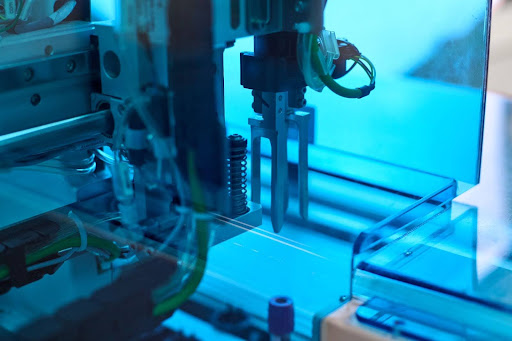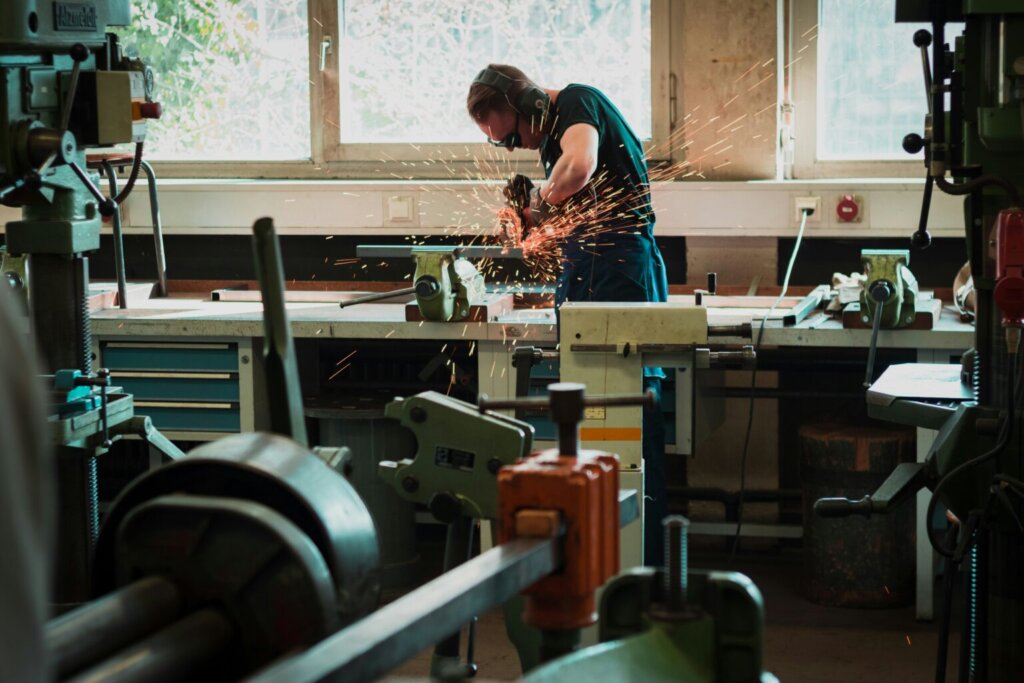
Mastering surface grinding for injection moulding: The key to unmatched quality and durability in manufacturing
Blog
Mastering surface grinding for injection moulding: The key to unmatched quality and durability in manufacturing
Authored By: SDI Plastics
Surface Grinding is a vital metal finishing process in the production of high-precision injection moulds, which directly impacts plastic product quality.
By efficiently removing excess material and achieving superior surface finishes, grinding lays the foundation that enables moulds to produce millions of dimensionally accurate, flawless plastic parts over years-long lifetimes.
However, as plastic products become more complex, mould designs continue to advance too. This demands ongoing mastery and optimisation of surface grinding skills to craft moulds achieving tighter tolerances, finer finishes, and faster cycling.
A skilled surface grind not only accelerates polishing but directly influences functionality.
The level of consistency, precision, durability, and demoulding ease designed into a mould tool determines end-use part quality. This dependence means mastering advanced grinding is key to global competitiveness.
Basics of surface grinding
Surface grinders utilise grinding wheels rotating at high speeds paired with horizontal table movement to remove material and improve surface finish accuracy on mould blocks.
Coolants reduce friction and flush away debris. Key factors like abrasive type, grit size, bond material, feed rates, and cut depths significantly impact outcomes.
Machinery for precision grinding
- Surface Grinders: Advanced computerised numerical control (CNC) surface grinders allow programmable multi-axis movement to achieve complex geometries. Granitan polymer concrete base construction offers vibration dampening for sub-micron finishes.
- Grinding Wheels: Diamond and cubic boron nitride (CBN) grinding wheels in various grit sizes enable precise tolerance ranges. Vitrified bonds cater to hardened steels above 60 HRc.
- Automated Cells: Robotic part loading and unloading, integrated measurement probes, and software automate multi-process surface and creep feed grinders for optimal productivity.
- Coolants: Advanced synthetic or semi-synthetic water-miscible coolants suit various alloys, providing a superior finish at high removal rates. Enclosed machines prevent fumes.
Surface grinding techniques for injection moulds
Efficient rough grinding rapidly removes bulk material before finer finishing passes providing dimensional accuracy and surface finish. This multi-step progression requires adjusting parameters accordingly.
- Rough Grinding: Quickly removes excess material using lower-grit, coarser wheels around 60–80 mesh.
- Finish Grinding: Finer grit wheels from 100–200 mesh create the desired dimension and surface finish. Final pass at 0.02 mm depth.
- Creep Feed Grinding: Used on hardened tool steels above 60 HRc. Low RPM, heavy cuts.
- CIA Grinding: Contoured convex and concave grinding with specialised wheels.
Automated cells with robotic part movement, probing, and software integration boost consistency. Continuous condition monitoring, like acoustic spark detection, improves process control.
The critical role of grinding in mould polishing
Since polishing involves progressively eliminating minuscule surface aberrations down to micron levels, any substantive grinding defects become amplified, needing deeper correction via polishing. An excellent ground surface finish minimises subsurface damage, which directly influences subsequent process cycle times.
Insufficient surface quality from grinding means deeper polishing cycles, higher costs, and delays. The adequate surface finish from grinding sets the foundation to minimise overall polishing time. This interdependence means grinding mastery improves cost efficiency.
Impact of Surface Grinding on injection moulding quality

Injection moulding’s high pressure and fast cyclic heating and cooling of complex steel moulds make any micro defects or residual stress pockets prone to accelerated metal fatigue failure, which translates into moulded plastic component quality issues.
Thus, a perfectly homogeneous mirror-finish steel surface ensures moulded parts reliably release with a consistent appearance, dimensional accuracy, and performance over millions of lifetime cycles without premature mould rework or unexpected downtime.
By expertly exercising stringent process control and precision at the grinding stage, mould makers directly enable the ongoing production of flawless, high-precision plastic parts from a given toolset, be it a simple cup or a complex medical device. Any grinding shortcuts undermine part quality consistency.
Best practices for optimised grinding
Achieving grinding excellence demands continuous improvement across machinery, measurement systems, process control, operator skill sets, and environmental factors.
Certified operators develop experiential judgements verified repeatedly against digital instruments like profilometers and magnetic bore gauges to track capability. Annual retraining maintains expertise.
Updated 3-axis and 5-axis CNC toolroom abrasive belt grinders, plus speciality machines like transversal rotary surface grinders, enable multi-process operations in a single set-up. Air-bearing spindles give micron-level accuracy and finish under 0.5 microns. Granite-based foundations offer high thermal stability.
Cleanroom-grade infrastructure standards prevent contamination, while automated maintenance protocols sustain high uptime. Dedicated teams ensure proper aqueous coolant concentration with scheduled recycling and replenishments.
Inspection documentation aids in analytical defect diagnosis to drive preventatives. Data-driven analytical thinking guides appropriate optimisations to stretch benchmarks. Structured problem-solving combined with operator creativity sustains continual efficiency improvement, critical for global cost leadership.
Conclusion
Surface Grinding may seem like an ordinary metal cutting step, but it constitutes the vital foundation that determines injection mould precision, lifespan, and downstream plastic part manufacturing quality. Mastering ever-advancing grinding capabilities, including adopting the latest automated multi-axis CNC grinding cells, is imperative for industry leadership.
When micron-level surface finish, geometry, and dimensional tolerances serve as daily production benchmarks that directly enable positive plastic product field performance, grinding mastery becomes integral.
By combining engineering rigour with structured continuous improvement, toolmakers designing the tool for injection moulding manufacturing, uphold quality standards that help secure their customers’ trust while exploring new frontiers in precision manufacturing.
Book your free consultation
Give us a call to book your free consultation and learn how much value can be added to your business with SDI Plastics by your side.